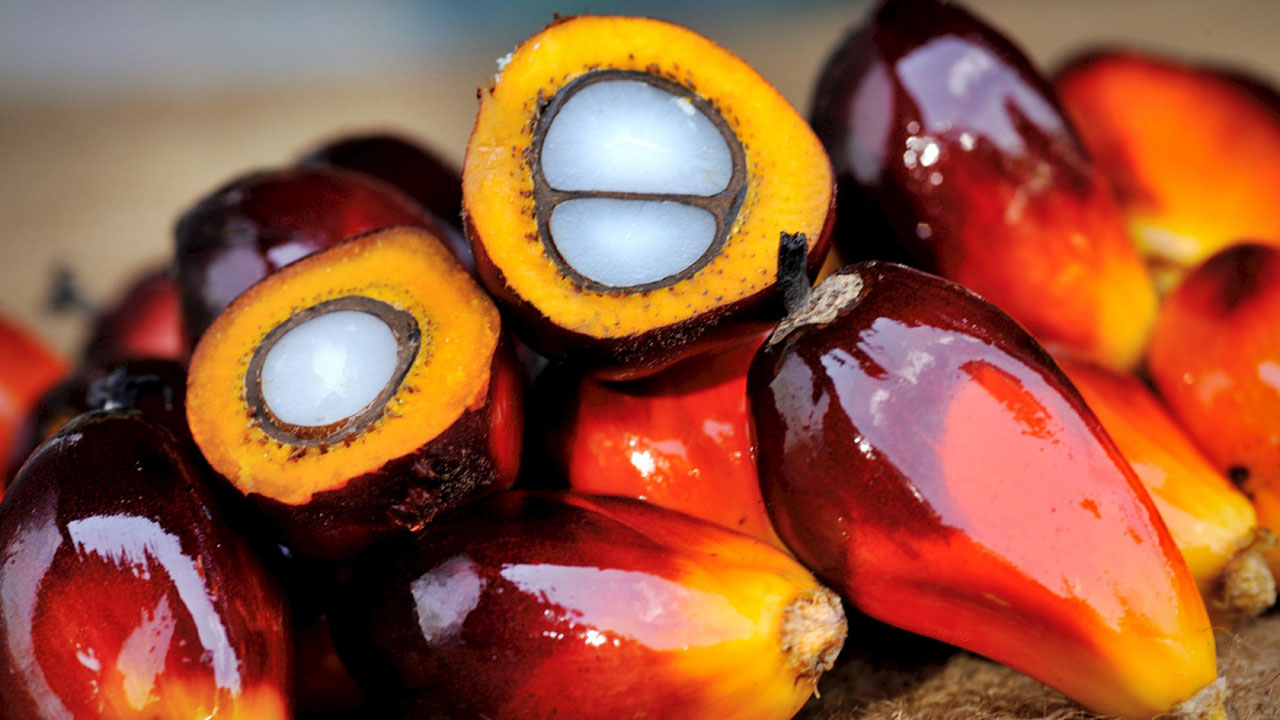
From being the world’s largest palm oil producer in the early 1960s and controlling an enviable 43 per cent of the global market share, Nigeria has dropped to become the fifth producer servicing barely 1.7 per cent of the global market, with Nigeria itself consuming 2.7 per cent of the total global production. The need to revisit existing backward integration for efficiency has become expedient than before if demand-supply gaps will be closed. BENJAMIN ALADE writes.
It is true that Malaysia owes the success of its oil palm industry to West Africa, particularly Nigeria, where the seeds for the product were sourced. However, committed investments in the industry as well as the political commitment of the government through persistent implementation of the backward integration plan are necessary for Nigeria to regain its dominant position in the sector.
As of 2021, Nigeria produces 1.4 million MTs, barely three per cent of Indonesia’s 44.5 million MTs, and about half of Thailand’s 2.7 million MTs production in third position. Having lost its global competitiveness as the world’s largest producer of palm oil, Nigeria struggles to reclaim its position through a backward integration exercise to drive the production of Crude Palm Oil.
With over 200 million people, Nigeria consumes roughly three million MT of fats and oils yearly. According to an analysis by PwC, an international auditing firm, palm oil accounted for approximately 45 per cent of total consumption in 2018. Nigeria remains the largest consumer of palm oil in Africa, with 1.4 million MT consumed in 2018, according to data published by the United States Department of Agriculture.
Domestic consumption increased to 1.6 million MT in 2019 and 1.7 million MT in 2020 and 2021. Similarly, consumption rose to 1.8 million MT last year. The increase in consumption in the 10 preceding years shows oil palm is one of the major crops in the country, with a growing domestic demand.
Nonetheless, only a negligible percentage of palm oil consumed is used by households. Most are for industrial use.
Even with the backward integration policy now being implemented by some local producers, analysts believe it could take as much as five to seven years to start seeing the return on investment. And it would also require considerable interest from the government to encourage more of such.
Already, Nigeria, with a teeming population continues to depend heavily on food imports, as the processing sector remains under-exploited due to low investments in value-chain processes of many commodities produced in the country, access to raw materials and insecurity in food producing states.
Being the largest consumer of palm oil in Africa, and with a local production that can barely meet 50% of local consumption alone, it is clear why Nigeria cannot export any crude palm oil, and instead has to import the deficit. Data from the United States Department of Agriculture (USDA) shows that between 2012 and 2021, Nigeria imported over 4.1 million metric tonnes of palm oil.
Indeed, palm oil consumption is not likely to reduce soon, and it is in the nation’s interest to ramp up production. A number of manufacturing companies depend on palm oil as a raw material. From the production of noodles, vegetable oil, biscuits, chips, margarines, shortenings, cereals, soaps, toothpaste, washing detergents, and even cosmetics, hundreds of thousands of MTs are being consumed yearly. Most of these manufacturers have to import the kind of high-quality food grade palm oil they need to sustain production, as only about 20% of the local production meets global standards.
If any difference will be felt in the oil palm sector, Nigeria must at least double the current local palm oil production. A ban on crude palm oil importation, as was done in 1986, will not suffice as it takes an average of five years to start producing fruits that can be processed into palm oil. And if the manufacturers are unable to fulfill their demand for the product via importation, relocating their businesses out of Nigeria could become inevitable, thus worsening the already bad unemployment situation in the country.
The replacement of the ban with a high import duty of 35 per cent on crude palm oil does not seem to have achieved much in encouraging self-sufficiency either, as the high cost is simply passed on to consumers of the end product.
The whole idea of the high import duties was to protect the local market – which in this case is made of multiple individual merchants producing at the level they can afford to, and just two large industrial players, Okomu Oil Palm Company and Presco PLC.
Beyond consumption, Nigeria needs improved production.
Aside from Edo and Ondo States, palm oil is found predominantly in southern Nigeria, especially Rivers, Cross River, Akwa Ibom, Imo, Anambra, Ebonyi, Abia, Enugu, Ebonyi, Delta and Savanna Belt states, among others.
It also exists in the wet parts of North Central Nigeria, in areas like Southern Kaduna, Kogi, Kwara, Benue, Niger, Plateau, Taraba and Nasarawa, as well as the Federal Capital Territory.
But while much has not been heard from the northern states, their southern counterparts, especially the Southeast governors and stakeholders have stepped up their games, to make the produce their source of revenue and a dominant player in foreign exchange earnings.
For instance, in Ebonyi State, the farmers, millers and processors from the 13 palm oil producing local councils have intensified efforts at boosting palm processing activities ranging from nursery, plantation, oil milling, marketing and other related palm value chains.
Reports have it that other states in the region are also toeing that line, especially now that the majority of the states are looking away from total reliance on allocation from the Federal Government.
Achieving increased production goes beyond the usual rhetoric but increased commitment to value-chain development.
With only two dominant players in the industry amid rising costs, stakeholders advocate increased competition and importation to bridge the supply gap.
According to them, while sourcing crude palm oil locally should actually be a cheaper option for industrial firms in need of the commodity, local production cannot meet their industrial demand for the product.
With Nigeria’s population projected to increase significantly in the coming years, there are concerns about the rising cost and capacity to purchase the commodity.
In addition to the industrial demands from sectors such as food processing, cosmetics, pharmaceuticals, and biodiesel, one may also need to be concerned about the increasing consumption of palm oil in homes.
The immediate past National President of National Palm Oil Produce Association of Nigeria (NPPAN), Henry Olatujoye had told The Guardian that the country needs to double its efforts in converting idle forests to economic gains, such as developing more plantations and increasing production and yield.
Olatujoye also attributed the development to supply deficit, aggravated by population explosion, as well as increase in industrial utilisation.
“Palm oil has always been higher in price when compared to petroleum products; this is because of population, which leads to increase in industrial utilisation and consumption.
“If production increases, definitely the price will go down. As at now, it is not like that, there is disparity between population and consumption. Right now, production is low, consumption is high. Definitely supply will be low and that will increase the price of the product.”
“It’s an economic theory, once there is enough supply in the market, prices will filter around the capacity of the purchasing power of people. The only thing we can do is to ensure that we increase our production capacity.”
Carving out a way forward
With the backward integration policy now being implemented in the country, there are concerns about the pace as stakeholders note that it could take as much as seven years to start seeing the returns. And it would also require considerable interest from the government to encourage more of such.
Stakeholders note that the first step would be to address the existing backward integration policy, adding that for about two decades, the only thing higher import duties have achieved is to pass on higher prices to consumers. According to them, it has not made the local players increase their production. If anything, it may have made them more complacent and content to just bask in the euphoria of their monopoly by enjoying higher prices.
They argued that if reducing import duties can translate to lower prices of imported goods for the consumers, it could pressure the local players to improve production, knowing that there are cheaper alternatives. This, of course, needs not compromise the quality checks on the imported products. To bring down the price of crude palm oil and meet the demand gap, the market should be more democratic for the law of demand and supply to be effective.
A first step to increasing the quality, and quantity of local crude palm oil production would be making sufficient investments to mechanize the process. While it is okay to let the local producers continue with what they already do, it is already clear that at the pace and scale they operate, they cannot cross certain production thresholds.
This could involve importing automated refineries to be situated in strategic states across the country, and maybe even providing some to farmer groups to increase and encourage their processing. Nigeria needs to move beyond the outdated processing methods and infrastructure currently being employed for this critical product. With a higher extraction capacity, such machines can significantly increase the quantity produced, and the cleaner processes resulting from it will ensure higher quality.
Adequate investment in modern technology is needed. What this could also achieve for us as a country is to encourage more young people into the oil palm business. Some smallholder farmers are of the opinion that the amount of labour and crude processes involved could be a discouraging factor for younger educated Nigerians to enter the sector.
With the slow-paced growth being experienced in the sector, it is expected that the penetration of the industry by new entrants as well as review of government’s position on duties would further drive the growth of the sector.






